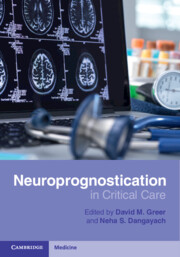4421 results
Historical and archaeogenomic identification of high-status Englishmen at Jamestown, Virginia
-
- Journal:
- Antiquity , First View
- Published online by Cambridge University Press:
- 13 August 2024, pp. 1-15
-
- Article
-
- You have access
- Open access
- HTML
- Export citation

Neuroprognostication in Critical Care
- Coming soon
-
- Expected online publication date:
- July 2024
- Print publication:
- 31 July 2024
-
- Book
- Export citation
SHEA position statement on pandemic preparedness for policymakers: emerging infectious threats
-
- Journal:
- Infection Control & Hospital Epidemiology , First View
- Published online by Cambridge University Press:
- 19 July 2024, pp. 1-3
-
- Article
- Export citation
Effect of Photolytic Oxalate Treatment on Soil Hydroxy-Interlayered Vermiculites
-
- Journal:
- Clays and Clay Minerals / Volume 29 / Issue 6 / December 1981
- Published online by Cambridge University Press:
- 01 July 2024, pp. 429-434
-
- Article
- Export citation
How do babies come to know what babies know?
-
- Journal:
- Behavioral and Brain Sciences / Volume 47 / 2024
- Published online by Cambridge University Press:
- 27 June 2024, e138
-
- Article
- Export citation
SHEA position statement on pandemic preparedness for policymakers: the role of healthcare epidemiologists in communicating during infectious diseases outbreaks
-
- Journal:
- Infection Control & Hospital Epidemiology , First View
- Published online by Cambridge University Press:
- 05 June 2024, pp. 1-5
-
- Article
- Export citation
Society for Healthcare Epidemiology of America position statement on pandemic preparedness for policymakers: mitigating supply shortages
-
- Journal:
- Infection Control & Hospital Epidemiology , First View
- Published online by Cambridge University Press:
- 05 June 2024, pp. 1-5
-
- Article
- Export citation
SHEA position statement on pandemic preparedness for policymakers: building a strong and resilient healthcare workforce
-
- Journal:
- Infection Control & Hospital Epidemiology , First View
- Published online by Cambridge University Press:
- 05 June 2024, pp. 1-4
-
- Article
-
- You have access
- Open access
- HTML
- Export citation
SHEA position statement on pandemic preparedness for policymakers: introduction and overview
-
- Journal:
- Infection Control & Hospital Epidemiology , First View
- Published online by Cambridge University Press:
- 05 June 2024, pp. 1-3
-
- Article
-
- You have access
- Open access
- HTML
- Export citation
SHEA position statement on pandemic preparedness for policymakers: pandemic data collection, maintenance, and release
-
- Journal:
- Infection Control & Hospital Epidemiology , First View
- Published online by Cambridge University Press:
- 05 June 2024, pp. 1-5
-
- Article
- Export citation
The Rapid ASKAP Continuum Survey III: Spectra and Polarisation In Cutouts of Extragalactic Sources (SPICE-RACS) first data release – CORRIGENDUM
-
- Journal:
- Publications of the Astronomical Society of Australia / Volume 41 / 2024
- Published online by Cambridge University Press:
- 03 June 2024, e039
-
- Article
-
- You have access
- Open access
- HTML
- Export citation
Bridging the gap from medical to psychological safety assessment: consensus study in a digital mental health context
-
- Journal:
- BJPsych Open / Volume 10 / Issue 4 / July 2024
- Published online by Cambridge University Press:
- 03 June 2024, e126
-
- Article
-
- You have access
- Open access
- HTML
- Export citation
Ectoparasite and bacterial population genetics and community structure indicate extent of bat movement across an island chain
-
- Journal:
- Parasitology / Accepted manuscript
- Published online by Cambridge University Press:
- 24 May 2024, pp. 1-53
-
- Article
-
- You have access
- Open access
- Export citation
The Dogs of Tsenacomoco: Ancient DNA Reveals the Presence of Local Dogs at Jamestown Colony in the Early Seventeenth Century
-
- Journal:
- American Antiquity , First View
- Published online by Cambridge University Press:
- 22 May 2024, pp. 1-19
-
- Article
-
- You have access
- Open access
- HTML
- Export citation
Sex-dependent differences in vulnerability to early risk factors for posttraumatic stress disorder: results from the AURORA study
-
- Journal:
- Psychological Medicine , First View
- Published online by Cambridge University Press:
- 22 May 2024, pp. 1-11
-
- Article
-
- You have access
- Open access
- HTML
- Export citation
Well-Being Domains in U.S. Military Veterans: Identifying Modifiable Factors to Promote Whole Health
-
- Journal:
- International Psychogeriatrics / Accepted manuscript
- Published online by Cambridge University Press:
- 21 May 2024, pp. 1-12
-
- Article
- Export citation

Cultural Burning
-
- Published online:
- 10 May 2024
- Print publication:
- 06 June 2024
-
- Element
-
- You have access
- Open access
- HTML
- Export citation
Distinct evolutionary lineages of Schistocephalus parasites infecting co-occurring sculpin and stickleback fishes in Alaska
-
- Journal:
- Parasitology , First View
- Published online by Cambridge University Press:
- 09 May 2024, pp. 1-8
-
- Article
-
- You have access
- Open access
- HTML
- Export citation
Alcohol milestones and internalizing, externalizing, and executive function: longitudinal and polygenic score associations
-
- Journal:
- Psychological Medicine , First View
- Published online by Cambridge University Press:
- 09 May 2024, pp. 1-14
-
- Article
-
- You have access
- Open access
- HTML
- Export citation
8 - Physician and Device Manufacturer Tort Liability for Remote Patient Monitoring Devices
- from Part III - The Shape of the Elephant for Digital Home Diagnostics
-
-
- Book:
- Digital Health Care outside of Traditional Clinical Settings
- Published online:
- 25 April 2024
- Print publication:
- 02 May 2024, pp 109-122
-
- Chapter
-
- You have access
- Open access
- HTML
- Export citation



